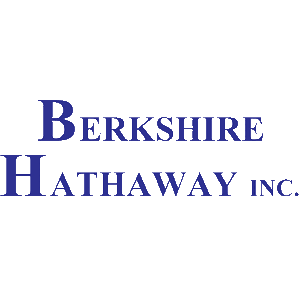
Killam Apartment REIT
TSX:KMP.UN

Q1-2025 Earnings Call
AI Summary
Earnings Call on May 8, 2025

FFO Growth: Killam delivered Q1 FFO of $0.28 per unit, up 7.7% from $0.26 in Q1 2024, driven by strong same property performance.
NOI Outperformance: Same property NOI grew 7.8%, with apartments at 8%, manufactured home communities at 7.5%, and commercial properties at 4.2%.
Occupancy Steady: Same property apartment occupancy held at 97.5%, matching last year’s level.
Expense Management: Expense growth was 4.6% for the quarter, with utility costs higher due to winter but offset by carbon tax removal benefits expected.
Dispositions & Acquisitions: Several property sales completed or pending, and Killam is set to purchase the remaining 50% interest in Ottawa JV properties for $136 million at a 4.5–4.6% cap rate.
Development Pipeline: The Carrick is set to open in June, with strong pre-leasing and innovative all-electric features; other developments are progressing on schedule.
Guidance Maintained: Management expects to achieve the middle to upper end of its 4%–7% same property NOI growth target for the year.
Balance Sheet Strength: Debt to total assets fell below 40% for the first time, and interest coverage metrics improved.
Killam reported robust financial performance for Q1 2025, with FFO per unit rising 7.7% year-over-year to $0.28. Same property NOI increased by 7.8%, reflecting broad strength across apartments, manufactured home communities, and commercial properties. The growth was attributed to healthy revenue increases and effective expense control.













































Good morning, ladies and gentlemen, and welcome to the Killam Apartment Real Estate Investment Trust First Quarter 2025 Financial Results Conference Call. At this time, all lines are in a listen only mode. Following the presentation, we will conduct a question-and-answer session. [Operator Instructions] This call is being recorded on May 8, 2025.
I would now like to turn the conference over to Mr. Philip Fraser, President and CEO. Please go ahead.
Thank you. Good morning, and thank you for joining Killam Apartment REIT's First Quarter 2025 Conference Call. I'm here today with Robert Richardson, Executive Vice President; Dale Noseworthy, Chief Financial Officer; and Erin Cleveland, Senior Vice President of Finance. Slides to accompanying today's call are available on the Investor Relations section of our website under Events and Presentations.
I will now ask Erin to read our cautionary statement.
Thank you, Philip. This presentation may contain forward-looking statements with respect to Killam Apartment REIT and its operations, strategies, financial performance, conditions or otherwise. The actual results and performance of Killam discussed here today could differ materially from those expressed or implied by such statements.
Such statements involve numerous inherent risks and uncertainties, and although Killam management believes that the expectations reflected in the forward-looking statements are reasonable, there can be no assurance that future results, levels of activity, performance or achievements will occur as anticipated.
For further information about the inherent risks and uncertainties in respect to forward-looking statements, please refer to Killam's most recent annual information form and other securities regulatory filings found online on SEDAR. All forward-looking statements made today speak only as of the date which this presentation refers and Killam does not intend to update or revise any such statements unless otherwise required by applicable securities law.
Thank you, Erin. We are very pleased with our strong financial and operating results for the first quarter of 2025. Killam delivered FFO of $0.28 per unit in the quarter, a 7.7% increase from $0.26 per unit in Q1 2024. We achieved 7.8% same property NOI growth across the portfolio, which included 8% same property NOI growth in our apartment portfolio, 7.5% same property NOI growth in our manufactured home community portfolio, and 4.2% same property NOI growth for our commercial properties.
The multifamily fundamentals in Canada are still very strong, and our same property apartment occupancy at the end of the quarter was 97.5%, the same as Q1 2024. We have completed the first quarter with meaningful progress towards our strategic targets listed on Slide 3, and we are on track to meet these targets by the end of the year.
We remain very optimistic about the future of the Canadian rental market and will continue to focus on growing our earnings, cash flow and the underlying value of our assets. Dale will take us through our financial results followed by Robert, who will discuss spring lease up trends and our ability to produce top line growth. I will conclude with an update on our current developments in our capital allocation strategy.
I will now hand it over to Dale.
Thanks, Phil. Key highlights of Killam's Q1 financial performance can be found on Slide 4. Killam earned net income of $102 million, which includes $70 million in fair value gains driven by robust same property NOI growth across our portfolio. We are pleased with our 7.7% increase in FFO per unit growth in Q1, generating $0.28 per unit compared to $0.26 in Q1 last year.
Our 3 most recently completed developments contributed meaningfully, adding $1.5 million in FFO growth compared to Q1 2024. Adjusted funds from operations also increased, up 9.5%. The growth in AFFO is a function of our strong same property performance and it's further enhanced by our capital recycling program, which focuses on selling older capital-intensive assets.
Our 7.8% same property performance in Q1 was driven by 6.6% revenue growth and 4.6% expense growth. Killam same property operating margin was also up by 70 basis points. With this strong start to the year, our same property NOI target for the year remains intact. We expect to end the year in the middle to upper end of our same property NOI target of 4% to 7%.
As shown on Slide 5, Q1 delivered 15% rental increases on unit turns. Combined with units that renewed in Q1, we achieved a 5.1% weighted average combined increase in apartment rental rates in the quarter. The step down in the weighted average rental rate change from 7.9% in Q4 2024 was anticipated based on Q1 and January in particular having the highest number of unit renewals during the year and a recognition that market rents are off their highs from mid-year last year. Our achieved average rental increase on unit turns of 15% was in line with the current mark-to-market of our portfolio.
Slide 6 highlights the variability of mark-to-market spreads between regions, with Halifax and Kitchener, Waterloo, Cambridge maintaining the greatest opportunity on turnover of approximately 25%. While we are confident in this figure, it's important to note that this spread will be captured over time based on the length of tenure from the units turning and the markets in which the units turn.
Slide 7 highlights Q1 expense growth by category. Total expense growth across the same property portfolio was 4.6% with general operating expenses up only 2.1%. Property taxes increased 4.8% due to higher assessments across the portfolio. Utility and fuel expenses were up 7.9% due to higher natural gas pricing and higher consumption through the colder winter heating season compared to the mild winter experienced in 2024. We do not expect the same level of energy expense pressure during the remainder of 2025.
The recent removal of carbon tax is estimated to provide annualized savings of approximately $2.5 million. We expect to see approximately half of this carbon tax removal savings realized over the remainder of 2025 with the other half realized in early '26.
We're pleased with our strong balance sheet positioning with our debt to total assets ratio down to 39.9%. This marks the first quarter in Killam's operating history that this ratio reached below 40%. We also reduced our debt to normalized EBITDA to 9.66x at the end of the first quarter and improved our interest coverage and debt service coverage ratios compared to Q4 2024.
Slide 9 includes average apartment mortgage rates by year versus prevailing CMHC-insured mortgage rates. In Q1, Killam refinanced $51 million of maturing mortgages with approximately $97.1 million of new debt at a weighted average interest rate of 3.67%. We have $253 million in apartment mortgage refinancing during the remainder of the year at a weighted average interest rate of 2.03%. The longer term outlook for mortgage maturities are favorable.
Based on current market rates, Killam anticipates refinancing at close to its current weighted average rate in 2026 and below the average interest rate for maturities in 2027 to 2029. As part of our debt management strategy, we are also leveraging CMHC programs as mortgages come due, with a focus on increasing our CMHC-insured coverage, which is now at 83.4% for our carbon portfolio, up from 79% this time last year.
I will now turn the call over to Robert, who will discuss our operating result in more detail.
Thank you, Dale, and good morning, everyone. Although new apartment supply is evident in Killam's markets, its impact has been nominal. We're very pleased with Killam's Q1 2025 leasing and rental growth results that generated a 15% weighted average rental increase on unit turns, as well, Killam is continuing to achieve strong leasing results with its spring 2025 leasing program.
Our ability to achieve these spreads on new leases speaks to Killam's well positioned rental rate, diversified portfolio. Further, Killam's dynamic operating platform drives pricing decisions based on up-to-date market information, keeping us informed so we may quickly move rental rates to address market changes.
The graph shown on Slide 10 illustrates Killam's apartment portfolios, rental buckets and highlights the rental options for tenants for a range of price points. 17% of Killam's portfolio has asking rents over $2,000 per month, which may experience limited competition from newly constructed buildings that demand rents between $2,000 and $2,500 per month to make their economics work.
Killam is confident it can retain its market share because our suites have an established tenant base, excellent locations and modern amenity offerings. By Killam's decision to operate in 7 provinces, our portfolio's further diversification based on rental rate is defensive and creates inherent opportunities for growth with lower risk. Killam calculates its average mark-to-market opportunity for its apartment portfolio to be approximately 15%, providing ample opportunity for additional rental growth across the portfolio.
For Q1 2025, the markets driving Killam's strong rental growth include Halifax, Moncton, Fredericton and Newfoundland, reaffirming the resiliency of the Atlantic Canadian rental market. We're confident these cities will outperform in 2025 in addition to strong rental growth and mark-to-market opportunities as shown on Slide 11. Occupancy levels and NOI growth in the region are above portfolio averages.
Slide 12 details the variability in the tenure length of tenants who moved out in Killam markets for the first 4 months in 2025. To date, in 2025, Alberta, BC and Ontario are experiencing the highest proportion of turns from units having tenancy of only 1 year and are delivering lower NOI growth.
Interestingly, the average increase in net operating income for New Brunswick is 12.44% despite the fact 50% of New Brunswick's turnover is from tenancies of only 1 year, demonstrating the strength of the market rents in this province. More broadly, Killam's portfolio turnover is increasing modestly, with turnover trending higher year-to-date in 2025 by 100 basis points to 19% turnover from 18% last year.
Using data analytics, we can see the average increase achieved on new leases based on the tenure land of the vacating tenants. No surprise here, the longer a tenant's tenure, the higher the increase in rent for the incoming tenants.
As shown on Slide 14, we are slightly behind last year's record-breaking numbers. Our rental increases year-to-date are in line with or slightly above the 5-year average across all tenure terms. We are seeing leasing activity return to pre-pandemic norms with asking rents beginning to stabilize, as illustrated by the blue bar, for 2025, year-to-date highlighted with the circle.
In summary, this data reinforces our ability to achieve our target of 5% to 6% revenue growth in 2025.
I will now hand you back to Philip to provide an update on our development and disposition activity.
Thank you, Robert. Subsequent to the end of the first quarter, Killam sold 4 properties in Newfoundland. On May 2, we completed the disposition of a manufactured home community in Gander and one in Corner Brook for a total sale price of $4.8 million and net proceeds of $2.9 million.
On May 5, we completed the disposition of 2 apartment buildings in Grand Falls, Newfoundland, totaling 148 units for $13.7 million with net proceeds of $11.5 million. We have 3 properties under a firm agreement to sell in PEI containing 127 units for $15.7 million with expected net proceeds of approximately $9 million. This transaction is expected to close by the end of May. In addition, we have 4 separate conditional agreements to sell an additional 725 units in PEI, New Brunswick for approximately $129 million, which are expected to close on or before the end of August 2025.
We invested $530,000 in our PV solar initiative in Q1 2025, and plan to spend approximately $3 million more by the end of the year on 11 additional PV solar installs throughout our portfolio. Our PV solar program is a key cornerstone of our ESG commitment. By continuing to invest in our electrical power production, we are reducing our carbon footprint and operating cost.
Building new apartment buildings in our core markets is an important component of Killam's capital allocation strategy. The Carrick, as shown on Slide 17, is expected to open on June 1, with the first 11 tenants moving in. We have strong pre-leasing with 26% of the building pre-leased. The Carrick will be Killam's first all-electric heating and cooling systems building.
The domestic hot water will be preheated using an air to water heat pump. The remainder of the hot water heating will utilize electricity, so the building will not require natural gas for day-to-day operations, thus mitigating the impact of carbon pricing and potential fuel taxes. Other green features include the energy efficient envelope, electric vehicle charging, low VOC finishes, LED lighting and low flow fixtures and full sub-metering to encourage conservation.
As shown on Slide 18, construction continues at Eventide, our 55-unit building off Spring Garden Road in Halifax. Completion is expected by Q3 2026, and pre-leasing will start in October.
Slide 19 shows progress to date of the Brightwood, our 128-unit wood-framed building at 150 Wissler located in Waterloo. Completion is scheduled for June 2026, and pre-leasing will also start in October.
In Halifax, we are working on a 95-unit development at Victoria Gardens and a 150-unit development at our Harlington Crescent community. We hope to start at least one of the above-mentioned developments by the end of the year and access the existing ACLP financing program from CMHC, which reduces overall development risk by providing below market interest rate construction debt.
On the acquisition front, we are actively looking and touring properties in Western Canada and Ontario, plus looking at a couple of our Atlantic Canada markets for new acquisitions. As RioCan reported on Tuesday, we have entered into a conditional agreement to purchase their 50% interest in our JV properties located in Ottawa.
To conclude, we are very pleased with our Q1 2025 performance and we remain committed to investing in high quality assets and developments, executing our overall strategy and creating value for all of our unit holders. I would like to thank our employees for their hard work and dedication. Thank you.
I will now open up the call for questions.
[Operator Instructions] Your first question comes from Mike Markidis with BMO Capital Markets.
Just first on the same property guidance. I know it's early in the year. You're probably being a little bit conservative just given that we still got 3 quarters to go. But I think, if I remember correctly, Q1 was sort of the worry in terms of where utility expenses would go, and now we have certainty on where that came out and we've got the carbon tax. So I'm just wondering looking at where you guys came in on OpEx this year and looking at what you're still expecting, what are the other OpEx pressures that might still be there in the portfolio? Because I think on a blended basis, you were below your OpEx expectation for the year, and we know what's going on with carbon taxes. Sorry, a long winded question, but hopefully that's clear.
Yes, I think property tax is still the one that we won't have final numbers on what those will actually be until the end of Q2 likely for the whole portfolio. So we are expecting it to come in around 6%. And unfortunately, a lot of what we've seen is supporting those numbers. So I'd say that is one that continues to be out there as an uncertainty. But we will have more color. But you're right, we were -- we knew we were going to have some higher utility costs in Q1, but they actually came in a little bit less than we had expected. So there are some positives on that front, absolutely.
Okay. Is the property tax, is it specific to a specific region or regions? Or is it broad based, the 6%?
It's quite broad based, yes. I'd say Halifax is one that, of course, for us is an important one in terms of what our average is, and that one has come in around that range.
Okay. Sounds like you guys are pretty top bombing. You pretty much got the agreements conditionally in place to hit your disposition target. So congrats on that. I haven't had a chance to make an estimation, but how should we be thinking about the purchase price of the remaining 50% interests relative to the volume of dispositions that you expect to close this year?
So are you asking what the purchase price is?
I guess in a backwards way, I am yes.
$136 million and a cap between 4.5 to 4.6.
4.5 to 4.6, okay. And can you remind us the blended cap on the disposition?
The first wave that we closed, bear in mind that they were in Newfoundland and they were sort of assets we had picked up many, many years ago in smaller portfolios. So they were sort of -- we never ever went back into those markets to purchase. So the liquidity was a little bit higher than the norm. So they were about between 6.5 and 7 for those 4 assets, and, obviously, the remaining deals will be lower than that.
Okay. Can you give us an indication of lower?
Lower? Between 5.25 and 5.50.
Okay. All right. So just as we -- I mean, you had a strong year-over-year earnings growth rate, but just as we look going forward, just given the capital recycling, and I guess you'll still have a bit of a drag now offsetting when The Carrick comes online, is it fair to say that your year-over-year earnings growth in the next 3 quarters will be lower than where you came in, in Q1?
I think -- well, I think so because -- partially because the benefit from the developments that were completed in late '23, the biggest -- every quarter, the year-over-year change is less. So when you think of that had meaningful impact in terms of FFO per unit growth this quarter, that will, by the time we hit Q4, will be positive, but not near to the same extent. So when I think when you look at FFO per unit growth and you factor that in, that alone is going to -- I think Q1 will be -- yes, could be the highest in terms of FFO per unit growth.
Yes, that's fair. And then last one before I turn it back. Can you just remind us -- I think there's a pretty favorable ACLP on The Carrick. So just trying to think about how to model it in the interest, and I imagine you start decapitalizing in Q2. Is that how it will work or...
Yes, exactly. So once we're substantially complete and leasing commences and people move in, then we would stop capitalizing the interest.
So we would expect -- right now, likely based on the timing, it will probably be July.
July, okay. And what's the rate on that loan specifically again? Can you remind us?
3.08%.
Congrats on the strong quarter.
Your next question comes from Jonathan Kelcher with TD Cowen.
First, just on the elevated amount of renewals in January. Is that just a hangover from COVID and then we should -- I guess we should expect to see your blended rental rates sort of inch up over the course of the year?
Yes, it is. And part of it -- like PEI is one region that has the majority of the renewals in January.
Ontario as well has a lot [indiscernible].
Okay. And then the increase in incentives, is that market specific, asset specific? Maybe let us know how you're thinking about that going forward?
Yes, it's very much asset specific and very specific to the Nolan Phase 2 lease-up in Civic 66 as well.
Okay. So outside of that, there are not a lot of incentives?
Yes, I think like 70% of the incentive balance in the month of March was specific to 10 assets in the portfolio. So it's pretty limited. And then across there, it would be very tiny sprinkling here or there.
Okay. And then just lastly on the development side, I guess outside of government programs, what are you guys seeing in terms of where hard costs are trending with tariffs and everything going on?
They have trended down. But -- and I guess really the one that we just priced in Waterloo, hard costs came in at about $360,000 for wood frame. And then all the other costs are saw plus the land. So we're pretty encouraged about that. So overall, it's stable to slightly declining, unheard.
Okay. And would that be similar for concrete as well or just...
Absolutely, yes.
Your next question comes from Kyle Stanley with Desjardins.
As I sit here today -- like you're approaching completion on the The Carrick and you note obviously a deep pipeline of opportunity still to come. But can you just talk through the yield dynamics on taking on the development yourself versus maybe looking to acquire new build assets, whether stabilized or not stabilized? Just how do you think you rank those in your capital allocation pecking order?
I think we've tried to communicate in the past -- the development side, you have to look at it from a point of view that is 2% to 3% on the balance sheet size. So at any given time, there's only between $100 million to $200 million. And the goal is to consistently be having -- or having that amount of development in the pipeline or finishing up. Therefore, in terms of growth, obviously, the real growth will come from looking at acquisition opportunities now or into the future.
Right. Okay. No, that makes sense to me. A question just on Halifax and supply. Obviously, you've kind of touched on it in your disclosures. I'm just wondering what is the market like for condo delivery, specifically in Halifax? And are you seeing similar dynamics at play in Halifax as maybe what we're hearing about in Toronto or Vancouver, more individual investors, some distress in the market and the impact that, that's maybe had on discounting of rents? Is that something that you see a risk of in Halifax at all?
Well, I think I can address the condo side of it. And really, there's one operator from Toronto. He's finishing up one that's about 70 units to 100 units, and he's in the ground for a second one about the same size. And I can't think of any other ones out there. Now maybe there might be a couple of them, but it's way less than a handful. So that's similar to a lot of the other markets right now for sure.
We've never had a big condo market here. It just isn't part of our market for rental for the most part because there's a very evolved new build on the multi side in Halifax.
Okay. Okay. That's as expected, but doesn't have the same risk profile as maybe we're seeing in other markets, which is good to hear.
Your next question comes from Dean Wilkinson with CIBC.
Phil, maybe just want to come back on the Brightwood. I think we have talked about this a little bit before. But the $200,000 close to differential between what you could build that and, say, the The Carrick, is that land basis or is that just straight up because it's a timber frame construction?
No. I mean The Carrick is a COVID -- pre-COVID - or a COVID building, which means there's HST to it, and that's a big chunk of the difference.
And then going forward, it still seems like there's quite a large spread between, say, steel frame, concrete construction and wood frame. Are you seeing more builds going towards the wood? Or do you think that could happen? Or how is that playing out because it would appear that wood might not be as hit by a potential cross-border tariff issues and things like that?
Well, I think the way that we're looking at it inside Killam isn't that -- if you look at 2 buildings and the land is yours, you can do either wood or mid-rise concrete. We're taking the approach that the wood building provides an opportunity that we can start and finish it in relatively 18 months versus 3 years.
So that's part of the decision as well. We're not saying we're going to go all wood. There will be -- obviously, in the next few buildings, if we get them ready to come out of the ground, it will be a mixture of the wood frame and the concrete. And it's about really looking at the timing it takes to develop these assets as well as the differential in the cost.
And the rents you're getting, I would assume are fairly similar?
Fairly similar, yes.
Your next question comes from Jimmy Shan with RBC Capital Markets.
So maybe just on New Brunswick operation. Fredericton, Moncton, still very strong markets it looks like. How are you feeling about New Brunswick over the course of this year, just given that you do have a bit of exposure to U.S. trade exports. I'm just kind of wonder what your thoughts are on that market.
Right now, we haven't seen any signs. I'm not saying there isn't in terms of the tariff sort of potential threat. And I look at them -- I mean, they're thriving sort of basically all 3 cities right now. So from our point of view and when you also look at it from an affordable average cost of rent in that province, it's very affordable, which helps cushion any type of economic sort of decline or impact on the tariffs.
And it seems they're holding stronger on population growth. So the main cities are still seeing people, and therefore, demand is there. In terms of the tariff, yes, so softwood, that type of tariff could be an impact. But if nothing else, Atlantic Canada has proved to be resilient and they find a way.
As we look into early May now, how is leasing so far and occupancy trending relative to how it ended the quarter?
Yes, it's been robust. I'd say quite similar to what we would have shown in Q1. So I think what we have seen, as the whole market is seeing, is that if rents are too high and people are still looking for pricing from 6 months ago for new stuff, it might not move as quickly. But once rents are adjusted to what true market rents are, we see a lot of activity. So we've been very pleased with the momentum from our spring leasing.
Sorry, just one more. Slide 14, it's interesting table here, where you show the tenant turnover by tenure. I was curious, if I look at the 4- to 6-year and over 6-year bucket where you're capturing obviously the biggest rental increase, is there any common reason for move-outs that you can gather from those 2 buckets?
From the older bucket, sorry?
Yes, yes, from the older buckets.
We've been serving people for years. It's homeownership. It's people growing families. Of course, with people moving to a senior center. So every year from tracking this, there is movement that happens. And we're not seeing anything different, I wouldn't say.
Every now and again, we get the 20- and 25-year tenants. So a multitude of things. And we wouldn't know definitively what it is.
[Operator Instructions] Your next question comes from Matt Kornack with National Bank Financial.
Just wanted to quickly touch -- I think you made the commentary that you're seeing market rents stabilize and, in some cases, accelerate again. And that would be evidenced by your kind of holding 15% mark-to-market, notwithstanding getting a pretty good rent increase this quarter. What markets are the markets that you're starting to see kind of move higher again in market rents at this point? Presumably, there's not a supply issue in those, but interested.
The acceleration is not significant, but we're seeing it in Halifax right now. It's doing well, where we have good activity. The 3 New Brunswick cities have done very well, and they continue. And as we went through April, it did very well.
And plus Newfoundland.
And Newfoundland.
And even assets in Ontario where we did bring those -- we were seeing a little bit of vacancy. We brought the rents down. Then those units leased up. And now we're able to start moving up slowly in select assets there, too. So it's really a variety of locations and assets.
Affordable product or relatively affordable product versus, call it, higher-end product in terms of that rent trajectory?
Well, like again our slide showed, I mean, we're just barely crossing over $1,500 as a whole portfolio. That goes to your point about affordability.
And value proposition. I mean, in terms of our assets, we've spent a lot of money on maintaining them, and I think it shows within markets when they start to get a little more challenging. We seem to be doing very well in terms of maintaining our existing and able to attract other renters at prices that are a gain for us and works for them.
It makes sense. I did notice as well on the CapEx front -- I understand that it's one quarter and there's seasonality in terms of CapEx spend, but it did seem like even for this time of year, it was on the lower side. Is that a function of a decision in terms of what to invest in? Or is it just a quarter?
A good observation. Actually, we had a discussion about it with our capital team. And it really is -- you'll see it pick up in Q2. And we know that we need to be getting contracts in place early so we can have the work done and maybe gain on the operating cost for the year, but that was a bit of a slow start this year, but we'll make it up.
Okay. Fair enough. And then lastly, I mean, I think you guys took advantage of the opportunity to get at to the 50% that you didn't own in Ottawa. But at the same time, I think at the beginning of the year or maybe late last year, you were talking about the disposition program and maybe some of that going to unit buybacks. Should we think that instead of buying back stock, you've done that transaction? Or is there still an opportunity to buy back the stock at this point with disposition proceeds?
I think there's still an opportunity to do buybacks with the -- once we finish up all our dispositions for 2025.
There are no further questions at this time. I'd now like to turn it back to your speakers for any closing remarks.
Thank you for listening in your questions today, and we look forward to our Q2 conference call on August 7. Thank you.
Ladies and gentlemen, this does conclude your conference call for today. We thank you for participating and ask that you please disconnect your lines. Have a great day.